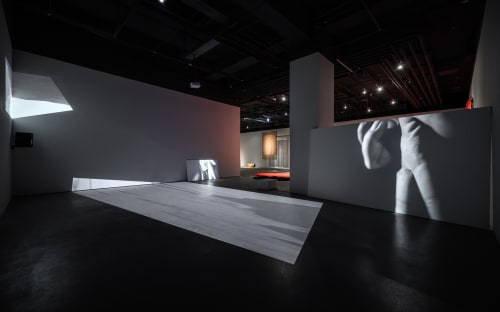It is an undeniable fact that in contemporary society numbers hold sway over our ways of communicating, perceiving and trying to understand or even predict the world around us. In the 21st century, algorithms have come to define and control the majority of individual and social relationships. Every day, improbable numbers are churned out, processed and enforced to quantify society in the extreme, often according to systems and rationales that elude us. The false sense of command and knowledge they entail is based on extremely complex processes that materialise as interiorised and accepted generalisations and abstractions. Yet it is precisely through their prism that we view the world – their claim to irrefutability and truth inferred from intricate mathematical and scientific studies and processed by supercomputers whose authority cannot be challenged.
Nonetheless, the human factor plays into these supposedly objective and immutable quantifications, for it is human perception and interpretation that lends meaning to abstract numbers. Numbers represent a concrete value resulting from a specific calculation, but they are suffused with the diverse subjectivities of their recipients. It is their judgment, background, experience, expertise or knowledge that confers value, significance or emotion on numbers depending on the connections they trigger in each individual’s mind. For most of us, numbers are merely abstract mathematical data; at best, we will connect them to the elements and factors that were used in determining them, enabling us to assign a given value or order of magnitude to them.
Nature too keeps holding us to account, confronting us with the impossibility of fully measuring and dominating it. In the face of nature, all the projections and predictions we derive from calculations remain hypotheses. Unlike humanity and its relentless quest to control everything – an attitude that will eventually lead to its downfall – nature finds strength in change and its ability to adapt and transform, whether through slow and imperceptible processes or through sudden and brutal outbursts that prompt an unexpected and sometimes devastating need for a new beginning.
Following on from these reflexions, Numbers, the recent video of the Taiwanese artist Charwei Tsai, produced in collaboration with the musician Stephen O’Malley, perpetuates the artist’s previous work while appearing more radical in its choices – a reaction to the current state of society and the specific context of the genesis of the work as well as to the possibility of further developing familiar concepts and works using new forms.
The artist’s video takes the shape of a harrowing countdown which at first glance does not seem to follow any specific logic; on the contrary, it appears to navigate freely among the voices that can be heard in it, its intensity oscillating between full-bodied singing projected into a majestic auditorium and the intimacy of a barely audible whisper. Distance and proximity coexist in the perception and reception of these numbers, which at first seem far removed from any concrete reality or immediate proximity. However, as the countdown progresses, the relationship of these numbers to personal experience intensifies, involving us in an increasingly intimate dialogue.
Black-and-white images dominate the visual aspect of the work, whose subjects are natural phenomena in their full grandeur and majesty, comforting and menacing at the same time. Except for a hesitant hand that appears sporadically, humans are absent, relegated to the status of spectators of the sublime spectacle playing out in front of them. The work unfolds gradually and partially, all the while signalling from its inception that it is more than the sum of its parts. While each individual element of which Numbers is composed elicits undeniable fascination for its beauty (the spectacle of nature) or mastery (the lyrical singing), the work draws its real strength from formal and conceptual contrasts and correspondences.
The emotion and evocative power of a number sung out loud; the perfect musical execution of the human voice harmonising with the mathematical and dehumanised essence of synthetic sound; nature deprived of its enticing chromatic attributes and reduced to shades of grey; majestic architecture devoid of human activity – all these elements combine to immerse viewers in a complex universe where everything appears to continually unsettle our certainties and our stubborn attempts to understand and control the world.


